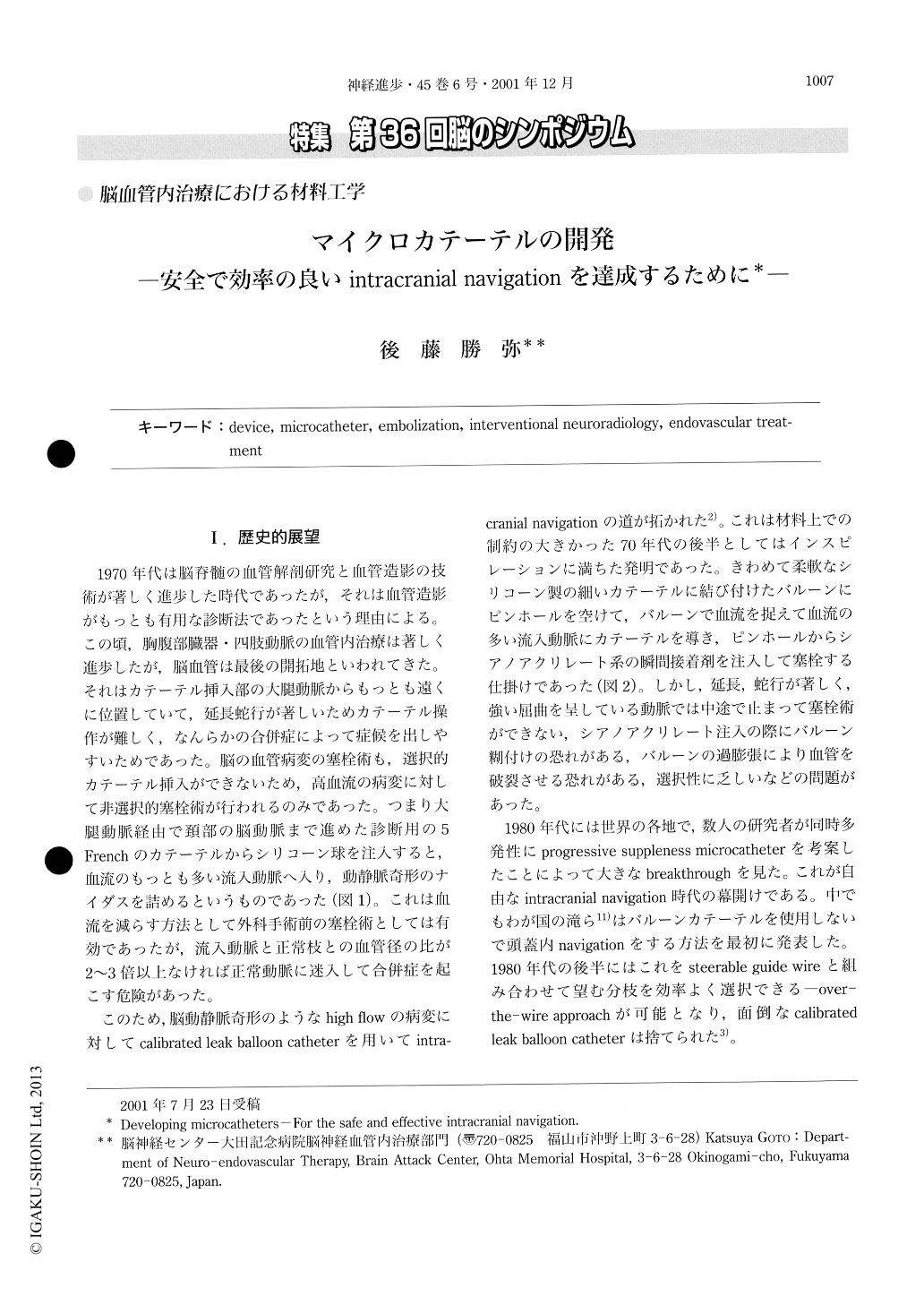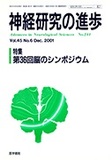Japanese
English
- 有料閲覧
- Abstract 文献概要
- 1ページ目 Look Inside
I.歴史的展望
1970年代は脳脊髄の血管解剖研究と血管造影の技術が著しく進歩した時代であったが,それは血管造影がもっとも有用な診断法であったという理由による。この頃,胸腹部臓器・四肢動脈の血管内治療は著しく進歩したが,脳血管は最後の開拓地といわれてきた。それはカテーテル挿入部の大腿動脈からもっとも遠くに位置していて,延長蛇行が著しいためカテーテル操作が難しく,なんらかの合併症によって症候を出しやすいためであった。脳の血管病変の塞栓術も,選択的カテーテル挿入ができないため,高血流の病変に対して非選択的塞栓術が行われるのみであった。つまり大腿動脈経山で頚部の脳動脈まで進めた診断用の5Frenchのカテーテルからシリコーン球を注入すると,血流のもっとも多い流入動脈へ入り,動静脈奇形のナイダスを詰めるというものであった(図1)。これは血流を減らす方法として外科手術前の塞栓術としては有効であったが,流入動脈と正常枝との血管径の比が2~3倍以上なければ正常動脈に迷入して合併症を起こす危険があった。
The navigation of the intracranial cerebral arteries was made possible as the result of the development of the calibrated leak microballoon catheters in the mid seventies. Although it was an inspired invention, it was soon discovered that there were drawbacks. Distal cerebral navigation through tortuous arteries was difficult using this device. In the process of attempting to occlude cerebral AVMs the catheter often ended up in an inappropriate position, ruptured vessels or glued in place. There was a major breakthrough that addressed some of these difficulties in the early eighties.

Copyright © 2001, Igaku-Shoin Ltd. All rights reserved.


